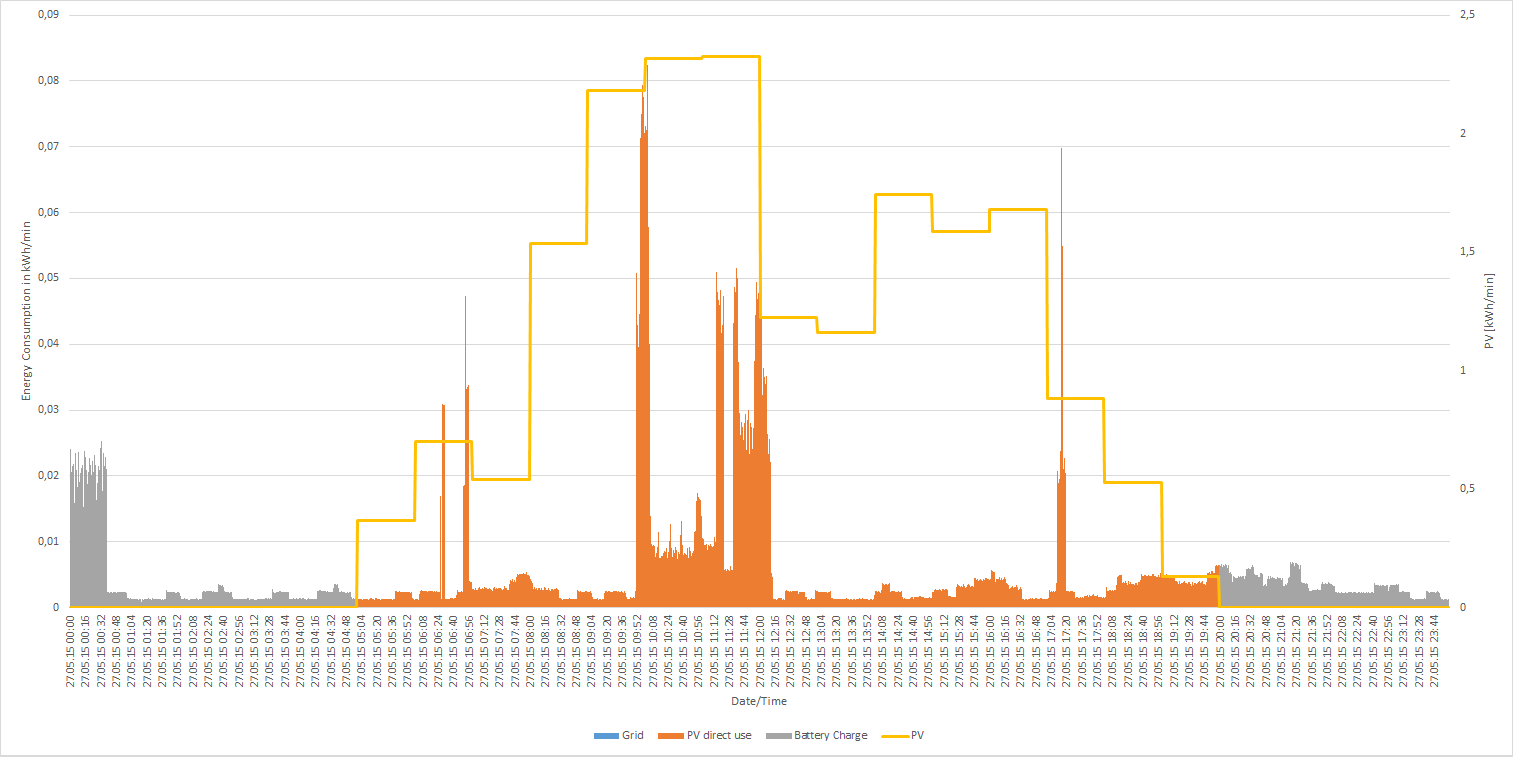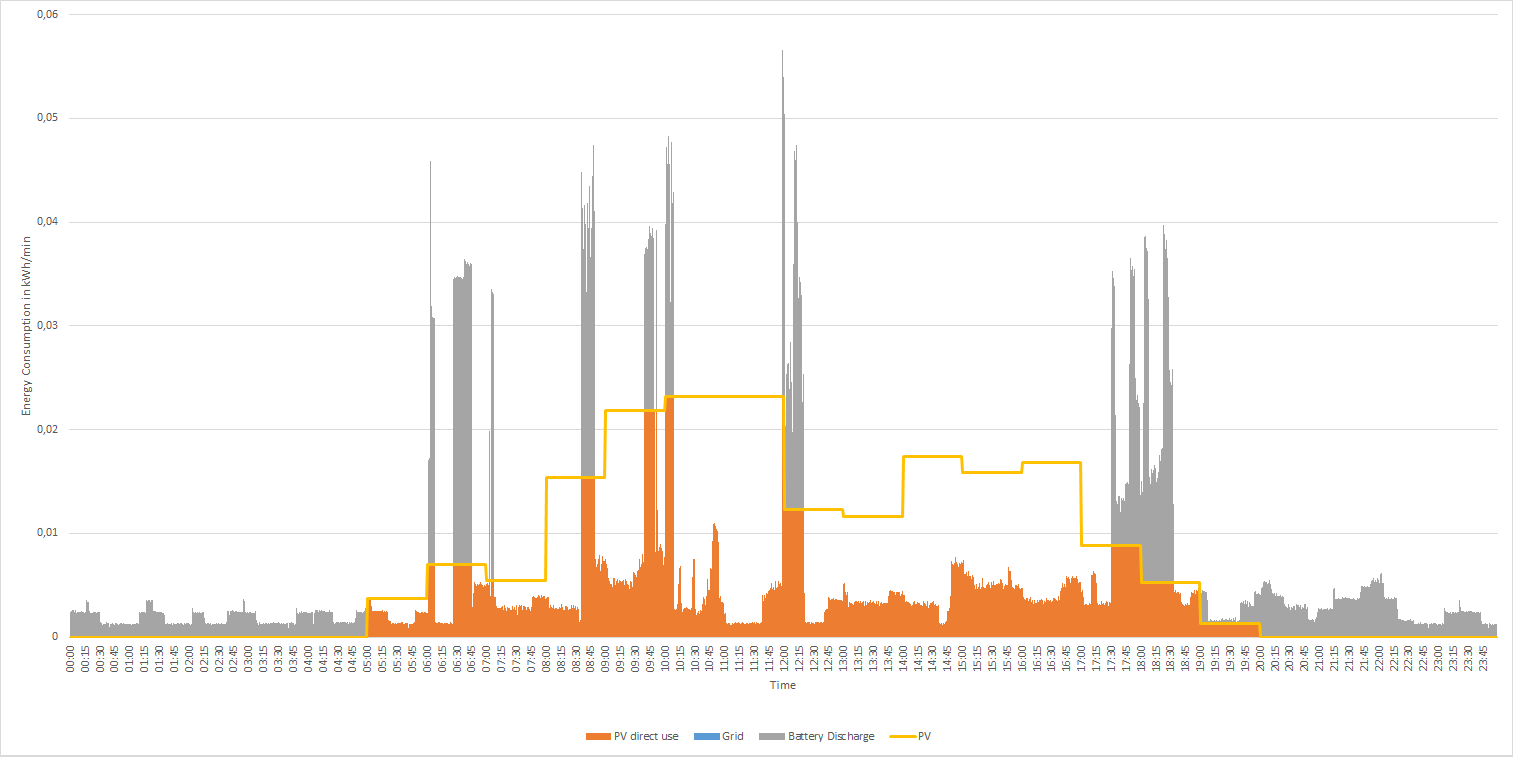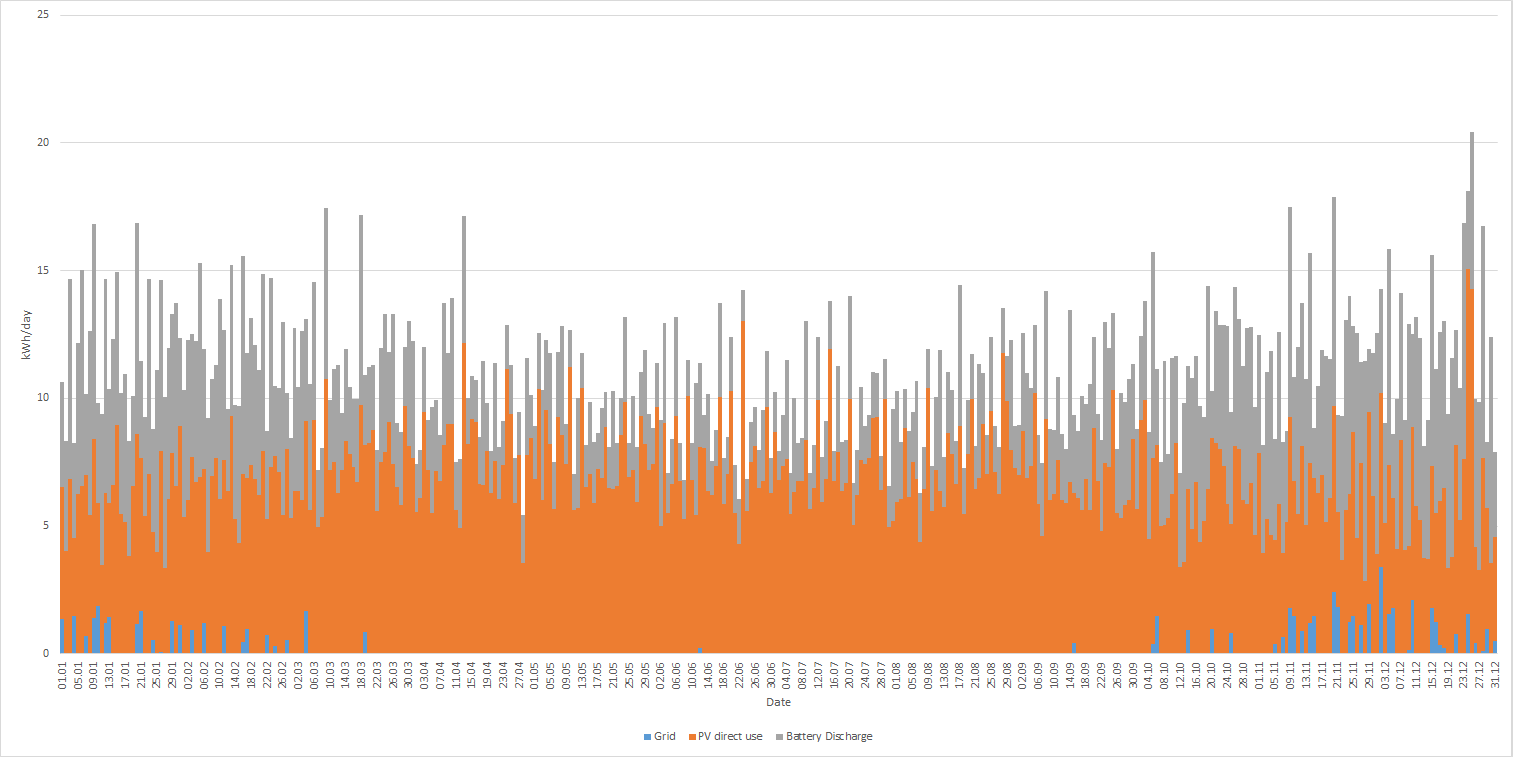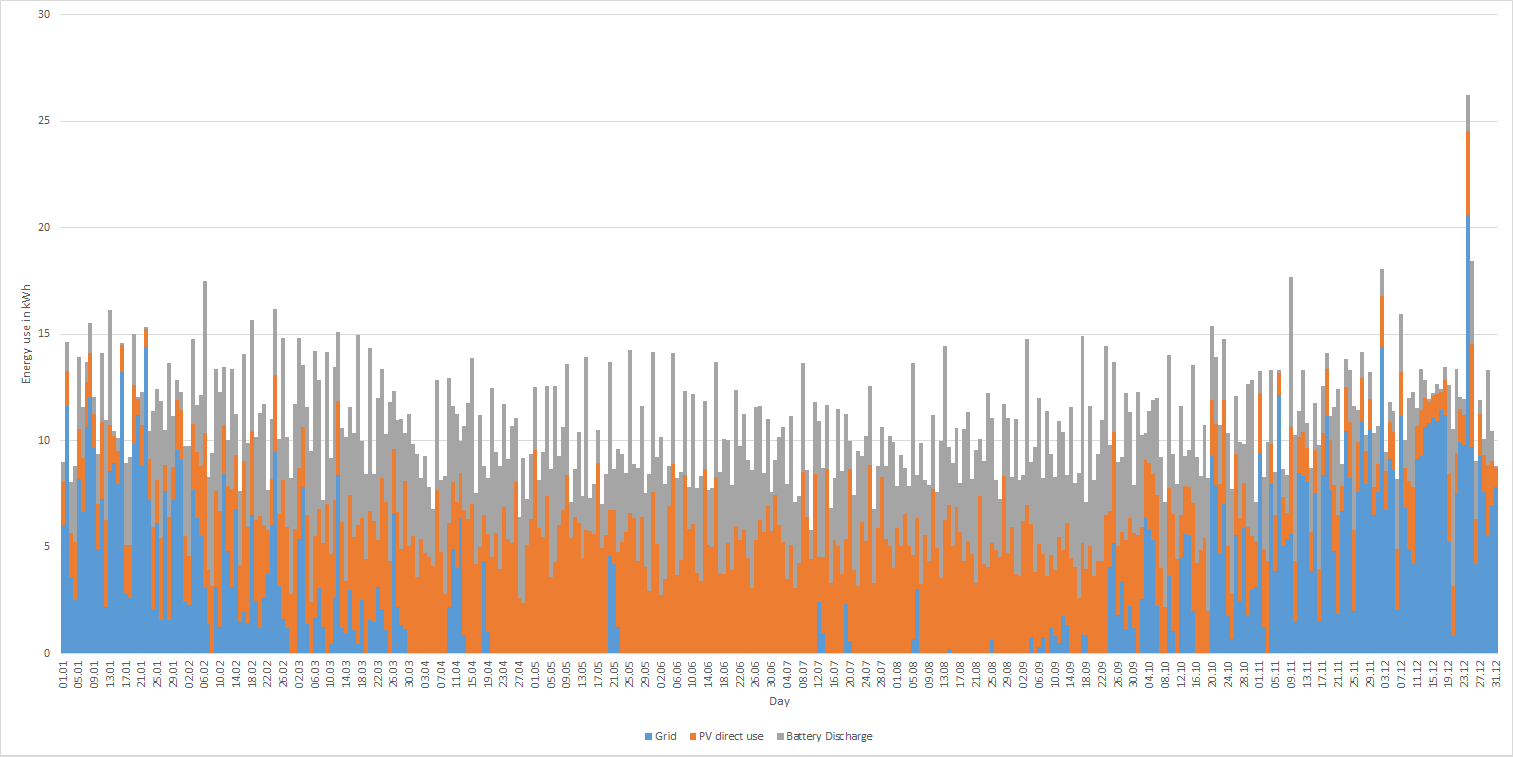2015-05-20
Due to the release of a certain battery by Tesla, there has been a lot of discussions about the potential for profit using the battery. Since German electricity prices are extremely high, many think that Germans would be a perfect target market. This is largely true, but unfortunately Germans are pretty frugal with electricity. Average energy consumption is around 3000-4000 kWh / household / year, which works out to 8-11 kWh/day.
One of the uses of the LPG is evaluating this kind of situations. I’ve picked a family with 4 people, about 4000 kWh yearly energy use and gave them a 7 kWh battery and a PV field.
The PV field came in two sizes: 5 kW (standard, about 50 m²) and 500 kW (ridiculous, utility sized).
The calculation itself is pretty simple: If the PV is generating electricity, then use that. If there is none, then try to use the battery. And if there is none of that either then use the grid. If there is excess electricity, first store in the battery until full and then sell leftovers to the grid. This is basically the best possible situation for energy arbitrage. The results are as follows:
| 5 kW PV [kWh] | 500 kW PV [kWh] | |
|---|---|---|
| Total Energy consumption | 3928 | 3950 |
| From Battery | 1424 | 1414 |
| From PV | 1487 | 2471 |
| From Grid | 1017 | 64 |
As you can see the arbitrage potential of the battery in both cases is pretty similar and works out to an average of 3.8 kWh/day over the year. The main problem is basically: To reach a high arbitrage is you need to consume your energy when there is no sun (obviously). But in the summer, when there is lots of sun, you don’t typically consume 7 kWh of electricity between 22:00 and 7:00, unless you have something very energy intensive running. Cases when this might apply could be for example running air conditioning or heating all night. But then it would be considerably cheaper to store the heat/cold directly instead of first going to the battery and back. So basically if you want to buy one of these batteries, take a very close look at how much electricity you actually consume after dark. It might be a lot less than you think.
Here are some charts showing how the energy use is distributed in this case:




